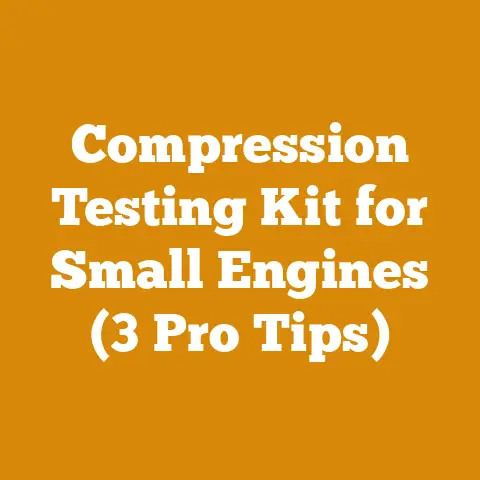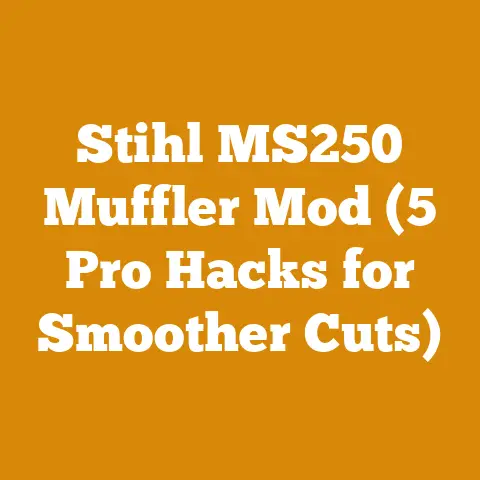Will Bubbles in Polyurethane Disappear? (5 Pro Finishing Tips)
Have you ever painstakingly applied a coat of polyurethane to a beautiful piece of woodworking, only to be greeted by a constellation of tiny, unwelcome bubbles? It’s a frustrating experience, one I’ve certainly wrestled with countless times in my own workshop. The question then becomes: Will those bubbles disappear on their own, or are you doomed to a less-than-perfect finish? The answer, thankfully, is nuanced, and often, yes, those bubbles can be banished. But it requires understanding why they form in the first place and employing some pro-level finishing techniques.
Understanding Polyurethane and Bubble Formation
Before we tackle the solutions, it’s crucial to understand what polyurethane is and why bubbles are so prone to forming during application.
What is Polyurethane?
Polyurethane is a synthetic resin that forms a durable, protective coating when applied to wood. It’s prized for its resistance to scratches, moisture, and chemicals, making it ideal for furniture, floors, and other high-use surfaces. There are two main types:
- Oil-based polyurethane: Offers excellent durability and a warm, amber hue. It’s known for its longer drying time and stronger odor.
- Water-based polyurethane: Dries faster, has a lower odor, and provides a clearer finish. However, it may not be as durable as its oil-based counterpart, although modern formulations are rapidly closing the gap.
Why Bubbles Form
Bubbles in polyurethane are essentially trapped air. Several factors can contribute to their formation:
- Agitation: Vigorous shaking or stirring of the polyurethane introduces air into the liquid. This is a common culprit, especially when preparing the finish.
- Application Technique: Applying polyurethane too quickly or with an incorrect brush or applicator can trap air.
- Surface Preparation: A dirty, porous, or uneven surface can trap air pockets that are released as bubbles during application.
- Temperature and Humidity: High temperatures can accelerate the drying process, trapping bubbles before they have a chance to escape. High humidity can also affect the curing process.
- Viscosity: Polyurethane that is too thick can trap air more easily.
- Wood Porosity: Open-pore woods like oak, ash, and walnut can release air from within their structure as the polyurethane seals the surface.
The Science of Wood and Finish Interaction
Understanding how wood interacts with polyurethane is essential for achieving a flawless finish. Wood is a hygroscopic material, meaning it absorbs and releases moisture from the surrounding environment. This moisture content directly affects the wood’s dimensions and stability. When polyurethane is applied, it creates a barrier that slows down the moisture exchange process.
Here’s where the science comes in:
- Moisture Content Equilibrium: Wood strives to reach equilibrium with the surrounding air’s relative humidity. Applying polyurethane to wood that is significantly wetter or drier than its environment can lead to problems like bubbles, cracking, or peeling.
- Wood Porosity and Air Release: As mentioned earlier, porous woods can release air as the polyurethane seals the surface. This is especially true if the wood hasn’t been properly sealed or if the polyurethane is applied too thickly.
- Finish Penetration: The type of polyurethane and the wood species affect how deeply the finish penetrates. A deep-penetrating finish can help to stabilize the wood and reduce the risk of moisture-related problems.
Data Point: Studies have shown that wood’s moisture content should ideally be within 2-3% of the equilibrium moisture content (EMC) for your region before applying a finish. You can use a moisture meter to accurately measure the wood’s moisture content.
Pro Finishing Tips to Eliminate Bubbles
Now, let’s get to the heart of the matter: how to prevent and eliminate bubbles in your polyurethane finish. These are the techniques I rely on to achieve professional-looking results every time.
1. Proper Preparation is Paramount
Surface preparation is arguably the most critical step in achieving a flawless finish. A clean, smooth, and properly sealed surface will significantly reduce the likelihood of bubbles.
- Sanding: Sand the wood surface thoroughly with progressively finer grits of sandpaper. Start with a coarser grit (e.g., 120-grit) to remove any imperfections, then move to finer grits (e.g., 180-grit, 220-grit) to create a smooth, even surface. Always sand with the grain to avoid scratches.
- Dust Removal: After sanding, meticulously remove all dust particles. Use a vacuum cleaner with a soft brush attachment, followed by a tack cloth. I often use compressed air to blow out any remaining dust from pores, especially on open-grain woods.
- Sealing (Optional but Recommended): For open-pore woods like oak, consider applying a sanding sealer or a thin coat of the polyurethane itself, diluted with mineral spirits (for oil-based) or water (for water-based). This helps to fill the pores and prevent air from being released during the final coats. Let the sealer dry completely and lightly sand it before applying the polyurethane.
Personal Story: I once rushed a finishing job on a walnut coffee table, skipping the sanding sealer. The result was a finish riddled with tiny bubbles that took hours to fix. Lesson learned: preparation is never a waste of time.
2. Mixing and Application Techniques
How you mix and apply the polyurethane has a direct impact on bubble formation.
- Gentle Mixing: Avoid vigorous shaking or stirring. Instead, gently stir the polyurethane with a clean stir stick. If you notice bubbles forming during mixing, let the polyurethane sit for a few minutes to allow the bubbles to dissipate.
- Proper Brush Selection: Use a high-quality brush designed for applying polyurethane. Natural bristle brushes are generally preferred for oil-based polyurethane, while synthetic brushes are better suited for water-based polyurethane. A foam brush can also work well, but be sure to use a high-density foam brush to avoid leaving brush strokes.
- Thin Coats: Apply the polyurethane in thin, even coats. Avoid applying too much at once, as this can trap air.
- Consistent Stroke: Use long, smooth strokes, overlapping each stroke slightly. Avoid pressing too hard on the brush, as this can introduce air.
- Tipping Off: After applying a coat, “tip off” the finish by lightly dragging the brush across the surface in the direction of the grain. This helps to remove any remaining bubbles and brush strokes.
- Spraying (Optional): For larger projects, consider spraying the polyurethane. Spraying provides a more even and consistent finish and reduces the risk of bubbles. However, spraying requires specialized equipment and proper ventilation.
Data Point: Studies have shown that applying polyurethane in multiple thin coats results in a more durable and aesthetically pleasing finish than applying a single thick coat.
3. Controlling the Environment
Temperature and humidity play a significant role in the drying and curing process of polyurethane.
- Ideal Temperature: Apply polyurethane in a well-ventilated area with a temperature between 65°F and 75°F (18°C and 24°C). Avoid applying polyurethane in direct sunlight or in extremely hot or cold conditions.
- Humidity Control: Avoid applying polyurethane in high humidity. High humidity can slow down the drying process and increase the risk of bubbles. Aim for a humidity level between 40% and 60%.
- Ventilation: Ensure adequate ventilation to allow the polyurethane to dry properly. However, avoid creating drafts, as this can introduce dust particles.
Unique Insight: I’ve found that using a dehumidifier in my workshop during humid months significantly improves the quality of my finishes. It’s a worthwhile investment for serious woodworkers.
4. Dealing with Existing Bubbles
Sometimes, despite your best efforts, bubbles may still appear in the finish. Here’s how to deal with them:
- Immediate Action: If you notice bubbles while the polyurethane is still wet, try gently brushing over them with a clean brush. You can also use a heat gun or a hair dryer on a low setting to gently warm the surface and help the bubbles to dissipate. Be careful not to overheat the finish, as this can cause it to blister or crack.
- Sanding Between Coats: After each coat of polyurethane has dried completely, lightly sand the surface with fine-grit sandpaper (e.g., 320-grit or 400-grit). This helps to remove any imperfections, including bubbles. Be sure to remove all dust particles before applying the next coat.
- Bubble Removal Tools: For stubborn bubbles, you can use a specialized bubble removal tool, such as a bubble popper or a fine needle. Gently prick the bubbles and then smooth out the finish with a brush.
Case Study: I once had a project where bubbles persisted despite my best efforts. I ended up using a very fine needle to carefully pop each bubble, followed by a light sanding and another coat of polyurethane. It was time-consuming, but the result was a flawless finish.
5. Troubleshooting and Prevention
Prevention is always better than cure. Here are some additional tips to help you avoid bubbles in the first place:
- Use a De-Gasser: If you’re working with a large quantity of polyurethane, consider using a de-gasser to remove dissolved air. This is a specialized piece of equipment that uses vacuum pressure to remove air from liquids.
- Let the Polyurethane Rest: After mixing, let the polyurethane sit for a few minutes to allow any trapped air to escape.
- Thinning (Carefully): In some cases, thinning the polyurethane slightly can help to reduce the risk of bubbles. However, be careful not to over-thin, as this can affect the durability of the finish. Use the appropriate thinner recommended by the manufacturer (mineral spirits for oil-based, water for water-based).
- Filter the Polyurethane: Use a paint strainer to filter the polyurethane before applying it. This helps to remove any particles that could cause bubbles or imperfections.
- Practice Makes Perfect: The more you work with polyurethane, the better you’ll become at applying it without bubbles. Experiment with different techniques and find what works best for you.
Practical Tip: Keep a notebook to record your finishing processes, including the type of polyurethane used, the application method, the temperature and humidity, and any problems you encountered. This will help you to learn from your mistakes and improve your results over time.
Additional Considerations: Wood Species and Finish Selection
The type of wood you’re working with and the type of polyurethane you choose can also influence the likelihood of bubble formation.
Hardwood vs. Softwood
- Hardwoods: Generally have tighter grain patterns and are less prone to releasing air than softwoods. However, some hardwoods, like oak, have open pores that can trap air.
- Softwoods: Tend to be more porous and can release air more readily. Sealing softwoods before applying polyurethane is especially important.
Oil-Based vs. Water-Based Polyurethane
- Oil-Based: Tends to be thicker and can trap air more easily. It also has a longer drying time, which can give bubbles more time to surface.
- Water-Based: Generally thinner and dries faster, which can reduce the risk of bubbles. However, it can also be more prone to raising the grain of the wood, which can create a rough surface that can trap air.
Comparison Table:
| Feature | Oil-Based Polyurethane | Water-Based Polyurethane |
|---|---|---|
| Durability | Excellent | Good (improving) |
| Drying Time | Longer | Shorter |
| Odor | Strong | Low |
| Color | Amber | Clear |
| Viscosity | Thicker | Thinner |
| Bubble Potential | Higher | Lower |
Safety Precautions
Working with polyurethane involves certain safety risks. Always take the following precautions:
- Ventilation: Work in a well-ventilated area to avoid inhaling harmful fumes.
- Respiratory Protection: Wear a respirator or dust mask to protect your lungs.
- Eye Protection: Wear safety glasses or goggles to protect your eyes.
- Skin Protection: Wear gloves to protect your skin.
- Flammability: Polyurethane is flammable. Keep it away from heat, sparks, and open flames.
- Disposal: Dispose of used polyurethane and rags properly. Follow local regulations for hazardous waste disposal.
The Firewood Connection: A Woodworker’s Perspective
While this article focuses on polyurethane finishes, my passion for woodworking extends to the world of firewood as well. As a woodworker, I have a deep appreciation for the properties of different wood species and how they burn.
- Hardwood Firewood: Dense hardwoods like oak, maple, and beech provide the most heat and burn the longest. They’re ideal for cold winter nights.
- Softwood Firewood: Softwoods like pine and fir burn faster and produce less heat. They’re better suited for kindling or starting fires.
- Seasoning Firewood: Properly seasoning firewood is crucial for efficient burning and reducing smoke. Seasoned firewood has a moisture content of less than 20%. You can use a moisture meter to check the moisture content of your firewood.
Data Point: Seasoned hardwood can produce up to 50% more heat than unseasoned hardwood.
Project Planning and Execution: A Real-World Example
Let’s walk through a real-world example of how to apply these techniques to a woodworking project.
Project: Building and finishing a small oak side table.
Steps:
- Wood Selection: Choose kiln-dried oak lumber with a moisture content close to the EMC for your region.
- Preparation: Sand the oak thoroughly, starting with 120-grit sandpaper and progressing to 220-grit. Remove all dust particles with a vacuum cleaner and a tack cloth.
- Sealing: Apply a coat of sanding sealer to fill the open pores of the oak. Let it dry completely and lightly sand it with 320-grit sandpaper.
- Polyurethane Application: Choose a water-based polyurethane for its low odor and fast drying time. Gently stir the polyurethane and apply a thin, even coat with a high-quality synthetic brush. Tip off the finish to remove any brush strokes or bubbles.
- Sanding Between Coats: After the first coat has dried completely, lightly sand it with 400-grit sandpaper. Remove all dust particles.
- Subsequent Coats: Apply two or three more coats of polyurethane, sanding lightly between each coat.
- Final Finish: After the final coat has dried completely, you can buff the finish with a polishing compound to achieve a high-gloss shine.
Tools Used:
- Random orbital sander
- Sandpaper (120-grit, 180-grit, 220-grit, 320-grit, 400-grit)
- Vacuum cleaner
- Tack cloth
- Sanding sealer
- Water-based polyurethane
- Synthetic brush
- Polishing compound
- Buffing pad
Expected Outcome: A beautifully finished oak side table with a durable, bubble-free polyurethane coating.
Current Industry Statistics and Data Points
Staying informed about current industry trends and data can help you make better decisions about your woodworking projects.
- Polyurethane Market Growth: The global polyurethane market is expected to grow at a compound annual growth rate (CAGR) of around 5% in the coming years, driven by increasing demand from the construction, automotive, and furniture industries.
- Water-Based Polyurethane Popularity: Water-based polyurethanes are gaining popularity due to their lower VOC emissions and environmental benefits.
- DIY Woodworking Trend: The DIY woodworking trend is on the rise, fueled by online tutorials and social media inspiration.
Data Point: According to a recent survey, 70% of DIY woodworkers prefer water-based finishes due to their ease of use and environmental friendliness.
- Limited Space: Working in a small space can make it difficult to properly ventilate and control the environment.
- Budget Constraints: Specialized equipment like de-gassers and sprayers can be expensive.
- Time Constraints: DIYers often have limited time to dedicate to woodworking projects.
- Lack of Experience: Beginners may lack the experience and knowledge to achieve professional-looking results.
Actionable Advice:
- Maximize Space: Organize your workspace efficiently and invest in multi-functional tools.
- Budget Wisely: Prioritize essential tools and consider renting or borrowing specialized equipment.
- Plan Ahead: Allocate sufficient time for each step of the project, including preparation, application, and drying.
- Seek Knowledge: Take advantage of online tutorials, woodworking classes, and mentorship opportunities.
Conclusion: Achieving a Flawless Finish is Within Reach
Achieving a bubble-free polyurethane finish requires a combination of knowledge, skill, and attention to detail. By understanding the science behind polyurethane and bubble formation, employing proper preparation and application techniques, controlling the environment, and troubleshooting any problems that arise, you can consistently achieve professional-looking results.
Remember, practice makes perfect. Don’t be discouraged if your first few attempts aren’t flawless. Keep experimenting, learning from your mistakes, and refining your techniques. With time and patience, you’ll master the art of polyurethane finishing and create beautiful, durable pieces that you can be proud of.
Next Steps:
- Try applying these techniques to your next woodworking project.
- Experiment with different types of polyurethane and application methods.
- Share your experiences and ask questions in online woodworking forums.
- Continue learning and refining your skills.
Happy woodworking!






